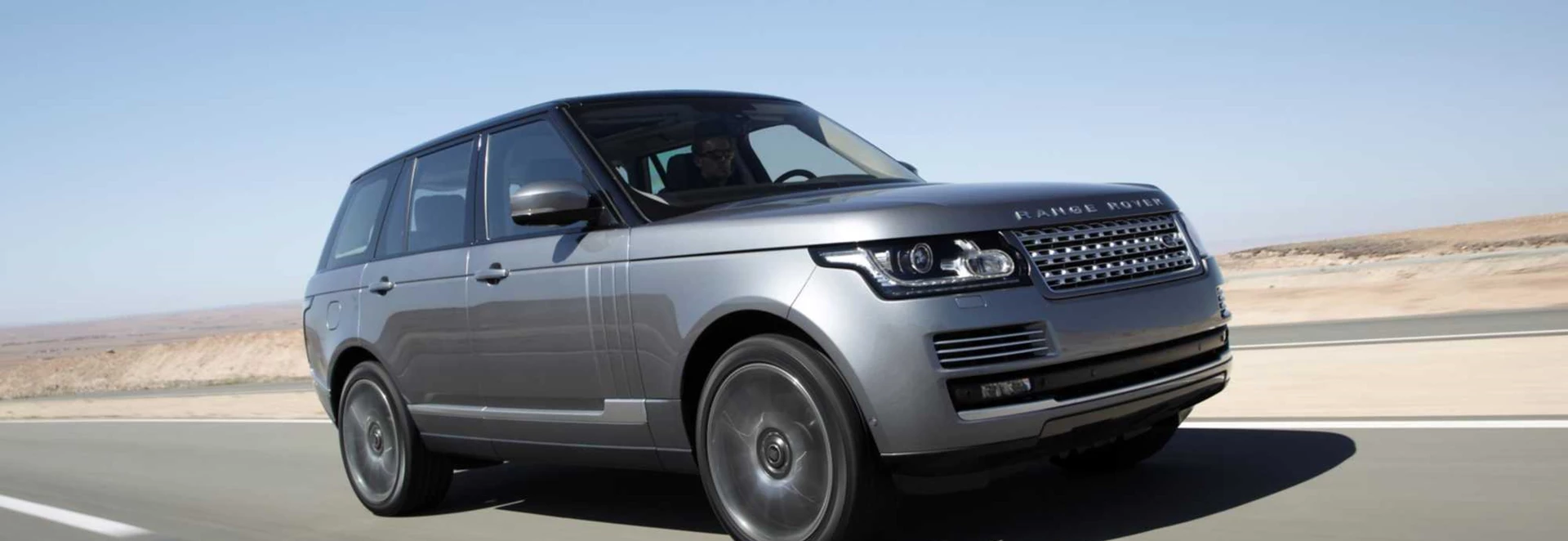It's a long time since Land Rover made any effort at all to promote its premier model as an off-roader. In fact, the Range Rover is still quite outstanding when taken off the beaten track, but it's marketed as a luxury car, and with considerable justification.
The current model, launched in 2013 and updated twice the following year, is the best yet, partly thanks to a switch to aluminium body construction which reduced the weight considerably and made this the first Range Rover which truly behaved like a luxury car on tarmac.
There are three diesel models, one of them a hybrid, plus the phenomenally fast petrol-fuelled five-litre V8 Supercharged.
Performance
With 503bhp, the V8 Supercharged is the outstanding model in this category. 0-62mph takes 5.4 seconds (only a few hot hatchbacks can beat that) and the top speed is limited to 155mph. Without electronic intervention, it would probably go quite a bit faster than that.
The 3.0 TDV6 is the slowest Range Rover, but with a 7.9-second 0-62mph time and a maximum of 130mph it's still rapid. The 3.0 hybrid and the 4.4 SDV8, which perform almost exactly as well as each other, beat the TDV6 by one second and 5mph.
Ride and Handling
If you plan to be adventurous it's best to avoid choosing 21-inch wheels and low-profile tyres, since these don't work well on snow, and, if it's raining, probably not on a grassy field either.
Despite the weight reduction, the Range Rover is still a heavy car with a high centre of gravity. This should be a problem, but brilliant suspension work makes the penalty seem almost negligible. Although there's a lot of body movement, it is always well controlled, and if you see a Range Rover lurching it's the fault of the driver, not the car. The driving experience is enhanced by amazingly low noise levels. Engine sound remains subdued unless you're accelerating hard, and the way what must be a violent rush of air round the huge door mirrors is practically inaudible from the cabin is almost miraculous. Realistically, very few owners will take a new Range Rover on to terrain much more challenging than a grassy field. The fact remains, though, that it can wade through rivers and climb up or down muddy slopes easily enough to flatter even an off-road novice. If you plan to be adventurous it's best to avoid choosing 21-inch wheels and low-profile tyres, since these don't work well on snow, and, if it's raining, probably not on a grassy field either.
Interior and Equipment
The first-generation model, launched in 1970, wasn't replaced for twenty-four years, and continued in production for another two under the name 'Range Rover Classic'.
Range Rovers have enough space to accommodate four large adults quite comfortably, though really tall rear passengers run the risk of inadvertently switching on the interior lights by knocking their heads against the switch. On the whole, the cabin is beautifully designed and a pleasure to sit in, but the digital instruments and the graphics on the touchscreen are not as elegant as the car's price might lead you to expect. Most manufacturers who attempt the same job do it better. All Range Rovers have a luggage capacity of 550 litres with the rear seats in place, and normal-length ones offer 2030 litres up to roof level with those seats folded down. In long-wheelbase versions the latter figure is a very generous 2345 litres.
Cost
The diesel-electric hybrid leaves all others standing with combined fuel economy of 44.1mpg and CO2 emissions of 169g/km.
The diesel-electric hybrid leaves all others standing with combined fuel economy of 44.1mpg and CO2 emissions of 169g/km. That's much better than the 4.4 SDV8 which, as mentioned above, has essentially identical performance. The downside is that the hybrid is priced similarly to the V8 Supercharged. Both have list prices starting in six figures, whereas you can have an SDV8 for just over £80,000, and you're not going to be able to make up the difference in lower fuel use and tax payments. The 3.0 TDV6, effectively the "entry-level" model with a starting price of under £74,000, has official fuel economy of 40.9mpg and a CO2 rating of 182g/km - not as good as the hybrid, but almost inconceivable for any Range Rover as recently as ten years ago.
Our Verdict
The Range Rover is an expensive car, costly to buy, run and repair, but it's also rather wonderful. Its refinement and road manners in particular are outstanding, and anyone prepared to investigate its off-road ability will be well rewarded. Practically nothing else, with the possible exception of the slightly smaller Range Rover Sport, can be used for clambering up a river bank and transporting elegant passengers to the opera and seem so appropriate for both purposes.




